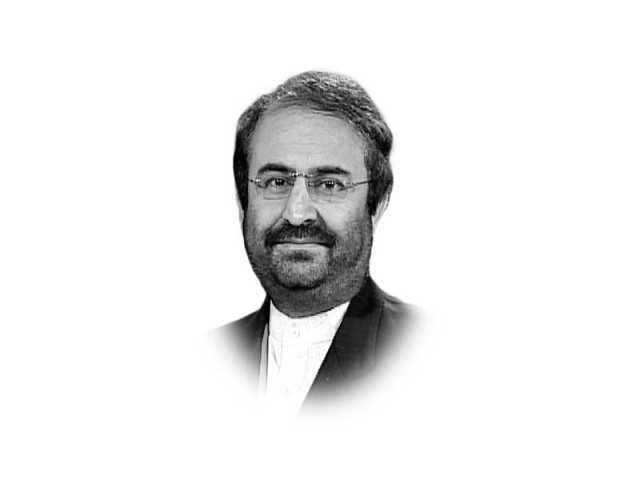Trump’s Afghan options
He has no plan, at least for now, to end war

The writer is a special correspondent of The Express Tribune for Afghanistan
“We are with you a thousand per cent. Keep fighting. We’re going to win. We’re going to win. I have your back,” the Department of Defence quoted Trump as telling the troops during the Salute to Armed Services Ball minutes after he raised the slogan “America First, America First.”
Although President Trump has yet to unveil his Afghan policy, he pressed the US forces in his first interaction to keep on fighting in the longest American war. It means Trump has no plan at least for now to end war but it could be one of the options he will have on the table as the US could not win the war against the Taliban in 15 years when NATO had nearly 1,50,000 troops.
The new US President should remind the words of his predecessor, Barak Obama, who has admitted the US and its allies could not defeat the Taliban. “War has been a part of life in Afghanistan for over 30 years. The US cannot eliminate the Taliban or end violence in that country,” Obama told US soldiers at MacDill Air Force Base in Florida on December 8.
A security situation report by the United States Forces Afghanistan says as of August 28, 2016, only 63.4 per cent of the country’s districts were under Afghan government control or influence, a reduction from the 72 per cent as of November 27, 2015.
There could be concerns the Taliban insurgents could overrun more areas when they would launch their so-called “Spring Offensive” in April. Taliban sources have confided to the author their leadership has changed many of their governors in a view to give “tough time” to the security forces in this year fighting season.
The Special Inspector General for Afghanistan Reconstruction, which provides independent and objective oversight of Afghanistan reconstruction projects and security, said this month that despite spending billions of dollars on security in Afghanistan, the around 3,500,00 Afghan security forces have “not yet been capable of securing all of Afghanistan and have lost territory to the insurgency.”
This situation should be eye-opener for Trump, who has inherited the Afghan conflict but he can put a stop if his administration shifts its focus to political process with the Taliban. The Taliban leadership has long been insisting on direct talks with Washington to discuss a timeframe for the withdrawal of the remaining around 15,000 troops.
The former head of the Taliban political office in Qatar, Syed Tayyeb Agha, says Mullah Omar had “agreed to initiate negotiations with the US in 2009 to discuss end to the invasion and to find out a peaceful solution to the Afghan problem.”
The Taliban political negotiators insist this policy remains unchanged and it is up to the US to respond.
The US officials had been in contact with the Taliban political office and have held talks on a number of occasions including nearly six-month secret negotiations to secure the release of the only US soldier, Sergeant Bowe Bergdahl in May 2014, in a deal that includes the release of five senior Afghan detainees at Guantanamo. If the US holds talks with the Taliban for six months just to free its one soldier, why it does not opt for peace negotiations to put an end to the killings and destruction in the war-ravaged Afghanistan? Afghans would expect those who have brought the war to Afghanistan, must wind it up.
The Taliban were quick to advise Donald Trump hours after he was inaugurated to review the policies of his predecessors Barak Obama and George Bush towards Afghanistan as the U.S. and its NATO allies have “failed to achieve anything” in their war in Afghanistan.
“The people of Afghanistan, who suffer due to the policies of the former American rulers, are hopeful that Trump and his cabinet would not follow the wrong policies of the former rulers and will keep the U.S. away from Afghanistan,” the Taliban said in a statement on January 21.
There is no doubt the key to end the Afghan conflict is with the US but the Taliban should also address to the perception among Afghans that the Taliban war is the main reason for the presence of the invading troops. Taliban will have to send clear and public messages to show they are willing to join the peace process. The Taliban leaders must realise the dangerous aspect of the ongoing war which is now ‘afganised’ and takes the lives of Afghans and unfortunately mostly civilians.
Some may agree with the Taliban’s approach that the Kabul’s administration is powerless and that is why they want to talk to the US first, but they should understand that the intra-Afghan dialogue is the only and the best option. The peace-deal between Hizb-e-Islami and the government is the recent example that the Taliban could follow. The deal, signed in September, was the result of the intra-Afghan dialogue and without any foreign involvement.
Published in The Express Tribune, February 8th, 2017.
Like Opinion & Editorial on Facebook, follow @ETOpEd on Twitter to receive all updates on all our daily pieces.















COMMENTS
Comments are moderated and generally will be posted if they are on-topic and not abusive.
For more information, please see our Comments FAQ